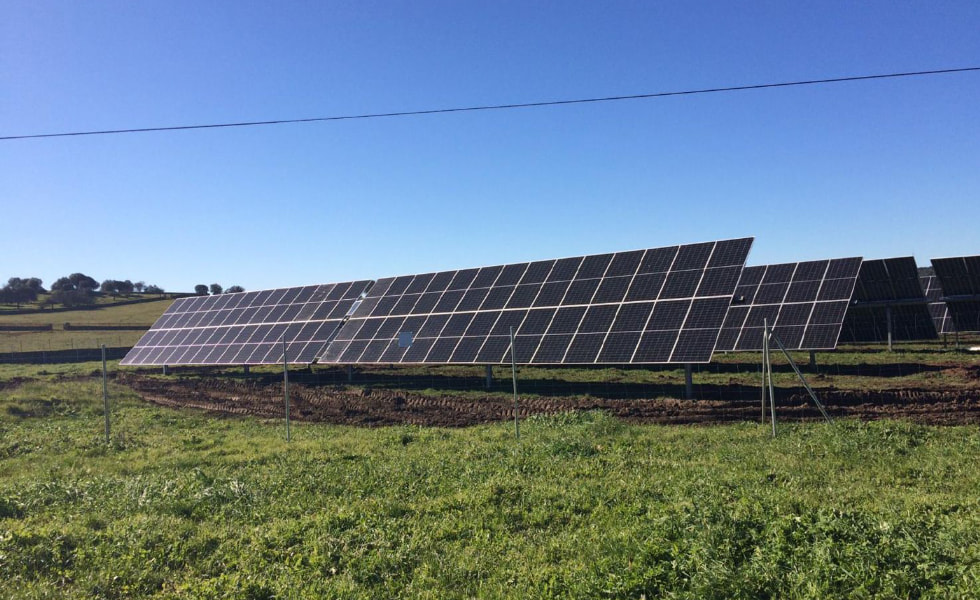
As environmental issues have come to the forefront of the agenda for the British government, the ways in which renewable energy can be harnessed are also coming under closer scrutiny.
When it comes to solar power, the idea of placing solar panels on agricultural land is being examined, tried and tested. But is it really a feasible experiment? Can we really rely on agricultural land for solar farms without harming the environment? And are there any benefits for farmers?
Placing solar panels on agricultural land
To begin with, combining the power of the sun and agricultural land is nothing new. Farmers have used energy from the sun for their work since the beginning of time, and indeed agriculture depends on weather systems and the movements of the sun.
Solar farms on farmland are simply putting the sun’s power to another use, for the needs of modern mankind and the wellbeing of the planet.
So what is a solar farm?
A solar farm is an array of solar panels set up on agricultural land, using maximum exposure to the sun, over large surface areas, for the production of electrical energy.
Benefits of using solar panels on agricultural land
The benefits of using solar panels on agricultural land can be manifold for energy consumers, the biggest beneficiaries may be farmers and agricultural customers.
Some of the benefits of solar panels include:
• Reduced dependence on the National Grid for energy supply and fluctuating energy prices
• Saving money – solar power is less expensive than grid power on a percentage basis
• Solar panels add value to farmland
• Solar panels are durable, last for decades, and are fairly low-maintenance
• Solar panels normally pay for themselves within a few years of installation
• Farmers can claim capital allowances for solar panels as they are classed as ‘plant and machinery’
Rooftop solar panels can also be used on large farm buildings, utilising space that would otherwise have been wasted while agricultural land remains agricultural.
It’s estimated that solar farms in the UK currently have a combined capacity of around 14GW, and around 9.6GW of this capacity comes from ground-mounted solar panels.
Around six acres of land is required for every megawatt (MW) of power (though this will be reduced to around 2-4 acres in future), which means that the solar panels on agricultural land in the UK as it stands makes up just under 0.1% of land in Britain. The UK government has pledged to bring this up to just 0.3% by 2035 in order to meet its net-zero target.
Even with all this investment in solar panel farms, the land being used would still only take up roughly 0.5% of the land currently used for farming – and about half of the space taken up by golf courses in the UK.
Do solar farms put agricultural land at risk?
Solar panel farms generally have the blessing of the agricultural industry. Renewable energy production is supported by the National Farmers Union and forms part of their net-zero plan.
The agricultural land is carefully selected for solar purposes. When choosing the land that is used for solar panels, there are things to be considered; the best way to connect the system to the grid, and which fields produce lower yields and are therefore being underused.
Many farmers will tell you that 550W solar panel farms do not put their land at risk. They are, in fact, positive about solar technology, as they can use their land for dual purposes: energy generation and food production.
On the latter point, many solar panel farmers have noticed that their farm is now more productive than before. Previously redundant or underused land can be used for livestock and crop farming while simultaneously being used as a solar farm.
What’s more, planting a biodiverse mix of native flora around and under the solar panels could also help fix carbon into the soil, which could mean producing food and generating energy at the same time.
A 2018 study in the USA found that grazing grasses grew better in the shade of solar panels, with “dramatic gains in productivity”, providing 90% more biomass in the summer as the areas under the solar panels became 328% more water efficient.
A four-year trial in Australia also revealed an improvement in the quality and quantity of sheeps’ wool where farms had installed solar panels. This was because the panels provided shelter for the sheep and better quality grazing grass.
The quality of grazing grass improves because the photovoltaic panels provide shade and water retention, which protects more delicate plants.
Looking further afield, Japan is a world leader in agrivoltaic installations – with 2,000 installed, and more than 120 different crops grown beneath the panels.
With all things taken into account, it can be said that using solar panels on agricultural land has many benefits not only for the environment, but also for the farmers, wildlife, and surrounding communities themselves.
